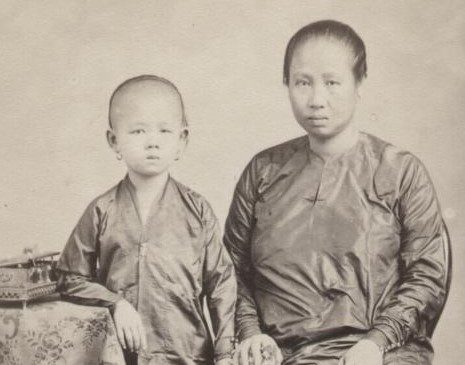Traditions & Culture
22 – Attire of the Chinese Community in the Dutch East Indies – 1/10

Batavia, 1867. KITLV 87452 See whole image below
In 1854, the Dutch East Indies society was constitutionally segregated into Europeans and non-Europeans. Laws regarding attire were introduced. Western attire was reserved for Europeans until early 20th century. The local population had to dress according to their ethnicity and culture.
Chinese women in the 19th century wore the “baju kurung”, a long-sleeved, knee-length tunic with a circular neckline worn with a cotton batik or gingham sarong. Another version was the “baju panjang”, which had a v-shaped neckline and a frontal opening fastened by brooches instead of buttons. Both forms of dress were borrowed from local cultures.
The manner of construction was traditional – the front and back were made from a continuous piece of cloth. Some researchers believe “baju kurung” and “baju panjang” were derived from the Indian “kurta” and Arabic “habaya”.

October 2020
Christopher Ng
This article is part of a series of 10 articles. A new article will be published on the 1st day of each month from October 2020 to July 2021. The bibliography of the series can be found here.


